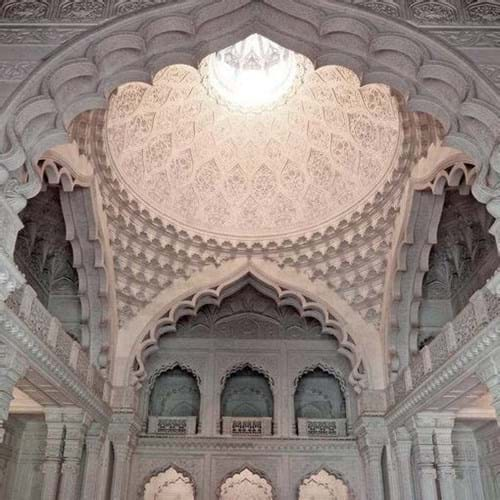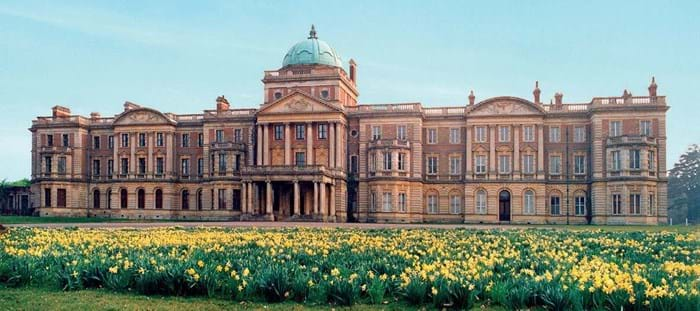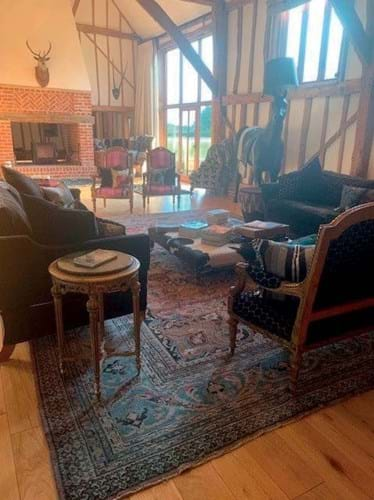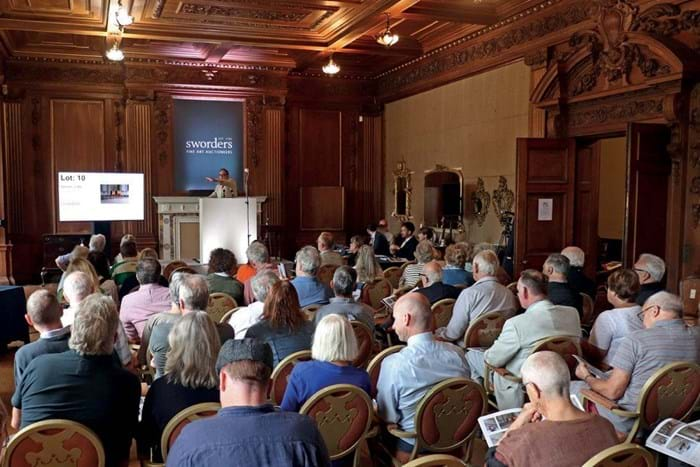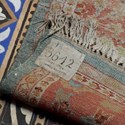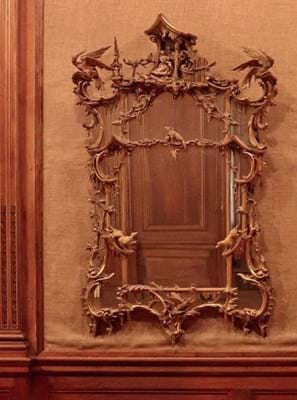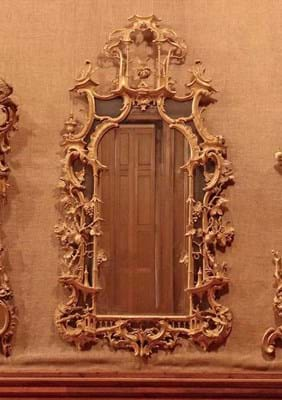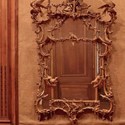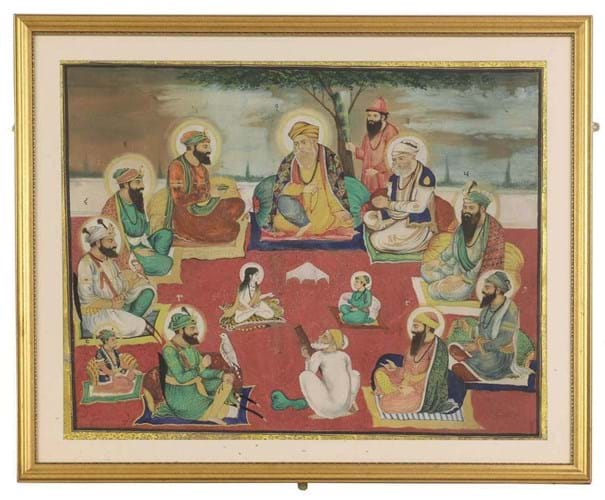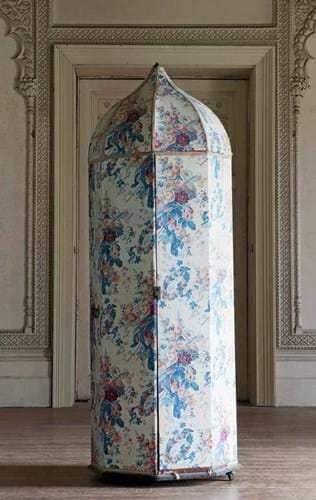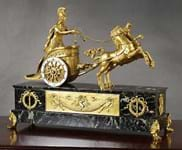The yesteryear glamour and excitement of the on-the-premises country house sale may never quite be replicated in the age of online platforms and the demise of costly lavish catalogues.
For most in the trade, the stories of provenance-rich treasures, offered within the walls where they have been kept for centuries, are now the stuff of distant memory.
Back in May 1984 a grand, three-day house sale was conducted by Christie’s for Benjamin Guinness, 3rd Earl of Iveagh at Elveden Hall in Suffolk.
The house’s claim to fame comes from its former occupant Duleep Singh (1838-93). Living in gilded-cage exile, the last Maharajah of the Sikh Empire purchased the Elveden estate in 1863 and had the house remodelled with an interior to resemble a Mughal palace.
It was this connection that helped draw the crowds nearly 40 years ago - and again in September when a rostrum returned to the grand house for a second contents sale presided over by Sworders of Stansted Mountfitchet, just over the county border in Essex.
The vendor on this occasion was the 4th Earl of Iveagh (b.1969) who opened the doors to the public for the one-day (nearly nine-hour) affair on September 14 featuring 440 lots.
Had a Guinness
Along with its 16,000 acres, the estate was bought in 1894 by Edward Cecil Guinness (1847-1927), the great-grandson of Arthur Guinness (the creator of the famous brew), who listed the family stout company in 1886 and became Ireland’s richest man.
The auction was to raise funds for house repairs. Elveden has not been a family home for nearly 100 years and is mainly used as a film location for TV shows and movies.
The collection at Sworders was from the Guinness family’s homes of both Farmleigh in Dublin and Elveden. Although many of the lots would not usually have warranted the treatment of a single-owner sale, their provenance, and the on-the-premises spectacle, merited the special attention.
While few seasoned dealers were tempted, hoards of private buyers came, saw and bought.
More than 1000 people visited across the five preview days, and for the auction itself, and 1192 absentee bids were made with a total of 1367 registered bidders.
Caroline Cannon was just one of the scores of private buyers.
“It was a wonderful occasion and an opportunity to have something in my home with such a marvellous provenance,” she told ATG. “It was so exciting bidding - my adrenaline was certainly going. I had gone to bid for a few lots but specifically a huge Persian carpet which, luckily, I managed to secure.”
Cannon, who lives in an 18th century barn conversion in Hertfordshire, bought the 16.5ft x 12ft (5 x 3.7m) Mashed carpet for a hammer price of £1300 against a £300-400 estimate.
“As I returned to pick the carpet up the next day, I saw so many items coming out of the beautiful entrance, all on their way to new homes, to provide all those lucky new owners years of enjoyment, pleasure and appreciation. I wished I had bought more.”
Full room
The sale achieved a 95% sold rate, taking a hammer total of £706,520 (£920,000 when including buyer’s premium). Bidders in the oak-panelled dining room kept the auctioneers on their toes. Most regional salerooms have not seen a room full of active bidders for years.
“Wave if we don’t see you - I haven’t said that in a while,” quipped Sworders’ head of art and estates Luke Macdonald.
Most lots were competed for by commission, room and online bidders with a number of phone lines also booked in. Those online hailed predominantly from the US, Ireland and the UK but interest also came from Spain, Italy, Isle of Man, Czechia and Turkey.
The Guinness connection was a natural draw for Irish buyers who were tempted by the many items that had been at the family’s house of Farmleigh, home to Benjamin (3rd Earl of Iveagh), which was sold to the Irish state in 1999.
Macdonald said: “The sale provided more proof, if needed, of the power of a strong and personal provenance, bidders and buyers from Ireland were keen to acquire pieces with a very specific Irish history, from Farmleigh in Dublin.
“English and European clients were keen to buy pieces with an aristocratic history linked to the extraordinarily exotic Elveden Hall. The Sikh community were drawn to pieces connected to Duleep Singh. With such a broad and specific appeal we were confident the auction would be a success; however, we were delighted and surprised by the level of interest and bidding.”
A late 19th century Ziegler Sultanabad pattern carpet with a label for Harvey Nichols from 1894 from the Farmleigh nursery dining room took £34,000 hammer against an estimate of £15,000-20,000, selling on the phone to a US private buyer. A second similar Ziegler carpet made £33,000 (against £20,000-30,000).
Two giltwood mirrors were bought by an online buyer, believed to be someone buying for a historical property in Ireland.
Both mirrors had hung in the entrance hall in Farmleigh. The George III giltwood mirror, c.1760, Irish, in the manner of Thomas Chippendale took £19,000 against an estimate of £20,000-30,000. The second, described as Chippendale style in the manner of Thomas Johnson, took £17,000 against an estimate of £10,000-15,000.
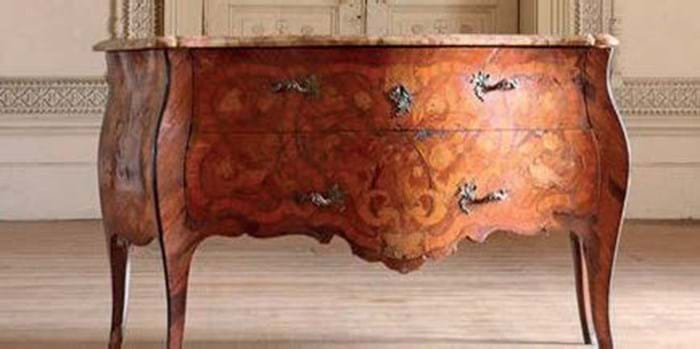
Louis XV floral marquetry bombé commode, £8000 at Sworders.
The same buyer also secured a Louis XV floral marquetry bombé commode at £8000, ten times its low estimate, and a set of six late 19th century giltwood open armchairs of Chippendale design at £7500 (estimate £3000-5000).
Another prominent buyer was an American who was furnishing a castle in Scotland. He flew from Chicago to Heathrow, hired a car and arrived just 10 minutes before the start of the sale.
Macdonald said: “He had deep pockets and was also keen to acquire items with the Guinness provenance, having enjoyed many visits to Elveden.”
Bust of baron
Fittingly it was a marble bust of Sir Arthur Edward Guinness, 1st Baron Ardilaun (1840-1915), that garnered another of the sale’s highest prices.
This 3ft high portrait on a Siena marble column was signed for Sir Thomas Farrell (1827-1900), the most successful sculptor in Ireland in the second half of the 19th century. He was responsible for many public statues in Dublin, including the bronze of Sir Arthur (the great-grandson of company founder Arthur Guinness) placed at St Stephen’s Green in 1891 on which this bust is based.
Once on display at the Guinness Brewery, it went to a London dealer via thesaleroom.com at £30,000 against an estimate of £5000-8000.
Much of the more ephemeral Guinness memorabilia sold well above estimate including a series of advertising posters. These were led by the Opening Time is Guinness Time showing a toucan removing the cap from a bottle of the black stuff (£2200) and the classic My Goodness My Guinness with an image of a zookeeper and sea lion (£2000).
Another advertising item, but something very different, was an early to mid-20th century Sutton & Sons glazed display of Grasses useless in Agriculture and found in Bad Hay and Pastures. It took £5500 against an estimate of £200-300.
A very similar example was sold at Lyon & Turnbull from the sale of dealer Keith Skeel back in June 2007. That version sold for a buyers’ premium-inclusive £2160.
Sikhs in Suffolk
As well as retaining a connection to Singh through its architecture, the estate is also the final resting place of Singh and his wife Bamba. Some members of the Sikh community make pilgrimages to the area to pay their respects.
An Indian School gouache on paper depicting a ceremony with 10 Sikh gurus and attendants was purchased by a Sikh historian who travelled to Elveden to secure the lot at £10,000. The buyer said “the late 19th century date of the work suggests it could have been purchased by Duleep Singh when he was living at the house”.

Two of the hand-coloured lithographs of Portraits of the Princes and Peoples of India by Emily Eden, £7500 at Sworders.
Another nod to Elveden’s unique connection with the Indian subcontinent was a group of 24 hand-coloured lithographs of Portraits of the Princes and Peoples of India. Among those featured were the Maharaja Ranjit Singh (father of Duleep) and the King of the Punjab, Maharaja Sher Singh.
The artist was Emily Eden (1797- 1869) who had journeyed to India in 1836 with her sister to join their brother George, Lord Auckland, who was governor-general from 1835-42. Her sketches were worked up on her return to England in 1842 and privately printed. One of the few surviving sets with contemporary colouring, they took £7500 (estimate £8000-12,000).
Interior options
Quite a few items tempted interior decorators to bid at the sale, including an Edwardian octagonal tented clothes closet by Robinson & Son of Ilkley, Yorkshire. Against an estimate of £400-600, bidding immediately jumped to £1500, with online bidders and a phone competing, before it was hammered down at £4500.
Much of the furniture sold well but prices were obviously not a patch on the past, much to the disappointment of those in the room comparing their own items at home. When a late Regency mahogany bow-front sideboard was hammered down at £400, a man in the saleroom muttered to his wife: “Our one cost me £8000!”
Of the pictures, the top lot was a 19th century hunting scene, The Meet by Samuel Henry Alken (1810-94), which took £26,000 from a phone bidder against an estimate of £10,000-15,000.
The sale had something for everyone including cars (the top lot of the day at £40,000 was a 1928 Rolls-Royce phantom once owned by MP and car collector Alan Clark) as well as a croquet set, a Chopper bike, a taxidermy lion and military uniforms.
Finally drawing to a close at nearly 7pm, Lord Iveagh, who lives in a smaller property on the estate, said the auction had been a success and added: “It’s been a joy seeing Elveden Hall furnished once again and looking so good. And wonderful to have so many visitors appreciating both the building and the items in the sale.”



